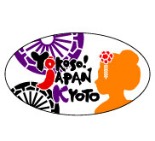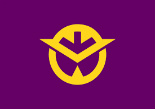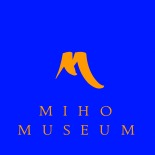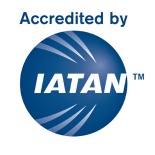JapanQuest Journeys Partners & Affiliations
‘Organizations that embody our ideals by adhering to the highest standards of excellence’
Japan National Tourism Organization
|
The Japan National Tourism Organization or “JNTO” provides information about Japan to promote travel to and in the country. JNTO is an Independent Administrative Institution of the Government of Japan with its headquarters located in Tokyo. JNTO maintains 13 offices in key cities around the world, through which a wide range of tourism-related promotions are carried out. Each overseas office is responsible for promoting travel and tourism to Japan; one of the most important functions is to help the travel industry encourage their clients to visit Japan. |

|
Japan Airlines
|
Japan Airlines (JAL), founded in 1951, has a global network reaching more than 60 countries/regions and 400 airports together with its codeshare partners. Its expansive domestic network covers nearly 60 airports throughout Japan. JAL is a member of oneworld alliance and has joint-ventures with American Airlines on trans-Pacific and Asia routes, and with British Airways, Finnair and Iberia on Japan-Europe routes. JAL has been recognized by numerous external evaluating agencies for its quality and performance. It was certified as a 5-Star Airline by international air transport rating organization, SKYTRAX. The 5-Star rating is awarded to airlines that provide exceptional and outstanding services to their passengers. SKYTRAX recognized JAL’s efforts to improve services, while providing excellent standards of comfort and inflight seating, combined with high standards of staff service across both the airport and onboard experience. SKYTRAX also awarded JAL for featuring the World’s Best Economy Class in 2019, and the World’s Best Economy Class Seat for three consecutive years. Likewise, TripAdvisor® recognized JAL as Japan’s Best Airline for the third consecutive year in its 2019 Travelers’ Choice awards for Airlines. JAL is a perfect choice when traveling to destinations throughout Asia including Tokyo, Shanghai, Hong Kong, and Singapore. |

|
ANA (All Nippon Airways Co., Ltd.)
|
ANA is the largest airline in Japan by revenues and passenger numbers. Founded in 1952, ANA flies today on 87 international routes and 121 domestic routes. ANA has been a member of Star Alliance since 1999 and has joint-ventures with United Airlines on trans-Pacific and Asia routes, and with Lufthansa, Swiss International Airlines and Austrian Airlines on Japan-Europe routes. Its Frequent Flyer Program, ANA Mileage Club, has more than 26 million members. ANA was awarded with the highest overall rating of 5-Stars by SKYTRAX, the world’s leading airline and airport review specialists. ANA has been highly commended [by SKYTRAX] for its consistently superior quality of service and for its dedication towards the further improvement of the overall passenger experience, in order to meet the needs of global customers. Furthermore, ANA is currently the only Japanese airline to have achieved the exclusive 5-star status for 8 consecutive years. SKYTRAX awarded the top rating to ANA for the consistently high levels of service the airline provides to its customers, from check-in to arrival. It also recognizes that ANA strives to go the extra mile to continuously enhance its service quality as a global leading airline and meet the needs of its increasingly international customer base. The carrier continues to open new international routes, positioning its wide-reaching international network as a core growth strategy. |

|
City of Kyoto
|
Kyoto is the most traditional city in one of the world’s most advanced countries. It was the centre of Japan’s culture and the imperial capital of Japan for more than 1,000 years. Kyoto boasts over 2,000 shrines and temples and numerous seasonal festivals and celebrations. It remains home to roughly 20% of Japan’s National Treasures and approximately 14% of its Important Cultural Properties; 17 of which have been registered as World Heritage Sites. Much of Kyoto’s traditional culture, which flourished during the Heian period, has been passed on and preserved, creating a repository of cultural excellence that cannot be experienced elsewhere. Here in Kyoto, the art of Japanese hospitality, or omotenashi takes on many forms, each tempered by time and symbolic ultimate refinement. From days of old, every kind of heart-felt expression of hospitality, resonating with the true spirit of omotenashi in an austere and humble setting, has been deemed by worldwide travelers familiar with life’s real treasures to be the ultimate luxury. Come to Kyoto and feel for yourself the roots and true essence of Japanese omotenashi. |

|
Tokyo Convention & Visitors Bureau
|
Tokyo is one of the most exciting and modern cities in the world. With over 400 years of history as the capital of Japan, Tokyo has a rich cultural heritage originating in the Edo period. The juxtaposition of the historical with the modern in terms of architecture, customs and trends make Tokyo unique and very different from any other city in the world. Modern architectural masterpieces exist side by side with historic temples, beautiful gardens, shrines and shops that have been in business for generations where kimono clad customers mingle with clientele wearing the latest in designer fashions. The beauty of Tokyo lies in its individual neighborhoods and in many ways Tokyo is the largest, most exciting village in the world. One can undoubtedly appreciate the fusion of traditional, modern and natural elements of the city. Tokyo’s world-leading list of Michelin-starred restaurants will undoubtedly spoil you for choice with the most ingenious fusion dishes on earth, and a plethora of world-class cuisine options not easily found elsewhere. Indulge in exquisite international-inspired culinary delights or sample the best of the best of Japanese cuisine at the very core of this cosmic center of the finest food on earth. The Metropolis’ exclusive 5-star hotels are citadels of luxury towering high above some of Tokyo’s most impressive and plush of neighborhoods far below and there are over 3600 hotels of all varieties to choose from throughout the city. Tokyo has an abundance of the finest in performing arts and 240 museums to see. Tokyo’s outstanding transportation system allows one to travel throughout the city with ease and to connect with all other major areas within Japan. The Tokyo Convention & Visitors Bureau is a non-profit foundation with the goal of attracting tourists and conventions to Tokyo and acts as a bridge between the government administration and the private sector. You will find more than what you expect, and you will love Tokyo! |

|
Ishikawa Prefecture
|
Ishikawa Prefecture is an area of Japan with a rich history of traditional cuisine, performance arts, and crafts that makes it a highly regarded destination among both Japanese and international tourists. Ishikawa’s fresh and pure water flows down from the mountains of Hakusan, the Japanese Alps, and enriches the soil for rice and sake production. A peninsula on the northern coast of Honshu, Ishikawa’s nutritious and delicious rice and sake combines with the abundant seafood from the Sea of Japan to make up Ishikawa’s unique and rich fine dining culture. The traditional arts have been nurtured in Ishikawa since age of the samurai, and to this day it is a preeminent source of the highest quality lacquer ware, kutani ceramics, and 99% of Japan’s gold leaf decoration. Ishikawa’s distinguished pedigree of craftsmanship lives through its artisans who are certified Living National Treasures. Ishikawa’s famous destinations including the Kenroku-en Garden, the 21st Century Museum of Contemporary Art, Kaga Hot Springs, the 1000 Rice Fields, and more, are now more accessible with the newest Shinkansen line in the Hokuriku Region. From March 2015 a trip from Tokyo to Ishikawa’s Capital City Kanazawa is just 2 hours and 28 minutes! |

|
Okayama Prefecture
|
Okayama Prefecture, the Land of Sunshine, is located 45-minutes by Shinkansen from Osaka at the center of western Japan. We are full of local charm, from Michelin 3-starred Korakuen, one of Japan’s Three Great Gardens, to the Kurashiki Bikan Historical District. Relax at the Mimasaka Hot Springs or at Hiruzen Heights. Taste our muscat grapes, white peaches and fresh seafood from the Seto Inland Sea. See our Bizen ware pottery, and try our made-to-order jeans. Visit the art island of Naoshima, close to Okayama. Our motto is “warm hospitality”, we want to welcome you. |

|
Shimane Prefecture
|
Shimane Prefecture is situated in the northern region of Western Japan, facing the Sea of Japan. It stretches widely from east to west, with the Oki islands located north of its shores. The land is blessed with riches both from the Sea of Japan and from the Chugoku mountain range. Shimane’s history is so vast and deep that the earliest time it first appeared was in the time of the Japanese mythology. There are various legends and folklores found everywhere in Shimane, and the culture and traditions related to those legends are still alive in people’s daily life. Shimane is also famous as the place where myriads of Japanese gods gather to hold annual meetings. Thus, Shimane is known as “The land of the gods” or “The land of myths”. The exact place where the myriads of Japanese gods gather is Izumo Taisha Grand Shrine, located in eastern Shimane. In the 10th month of the lunar calendar, all of the gods gather there. In addition to the gathering of the gods, many people around Japan visit there to pray as well. In eastern Shimane, there are more tourist destinations, such as Matsue, which is the capital and a former castle town, and the Adachi Museum of Art, a Michelin Guide 3 stars winner. Central Shimane is home to the World Heritage Site, Iwami Ginzan Silver Mine. The mine came to its peak early in the 17th century. At that time, Japan produced one third of the world’s silver and the majority of that silver was from this mine. The part of mining town is kept in good condition and is good for a walk to take in the unique atmosphere. A guided tour of the tunnels is especially recommended. In western Shimane, you will find breathtaking scenic beauty, such as a beach of singing sand and varied mountain landscape. In addition, the town of Tsuwano is famous for its white walls lining the main street, giving a glimpse of good old Japan. The Oki islands area consists of about 180 large and small islands with a mesmerizing and dynamic landscape which goes far beyond your expectations. Oki is home to a unique history, culture and ecosystem, and because of its unique geography, Oki has been a member of the Global Geoparks Network since September, 2013. |

|
Shizuoka Prefecture
|
From the east, Shizuoka Prefecture is divided into four areas Izu Area, Fuji Area, Central Area and Western Area. |

|
Kodo Cultural Foundation
|
Since its international debut in 1981, Kodo has been the world’s premier Japanese drumming and traditional performing arts group, delivering over 3300 performances on five continents. Kodo spends about a third of each year overseas, a third touring in Japan and a third at home in a village of its own creation, resting and preparing new material. Its many recordings are available throughout the world. Located in the Sea of Japan, and graced with exceptional natural beauty, Kodo’s home of Sado Island has been a crossroads of traditional culture for centuries. Its living and unusually rich traditional heritage has given Sado the nickname: Island of the Performing Arts. The Kodo Cultural Foundation was established in 1997 with a mission to not only preserve Sado’s cultural and environmental treasures, but to develop unique ways for visitors to experience them directly. From the conservation of local habitat to the revitalization of rare craft traditions and Noh theaters throughout Sado Island, the Kodo Cultural Foundation oversees many vital projects; including the Earth Celebration International Music Festival, the Kodo Apprentice Centre, and the Sado Island Taiko Centre. Visit the Kodo Cultural Foundation Website |

|
Benesse House
|
Benesse House opened in 1992 as the core facility of Benesse Art Site Naoshima*. It was conceived as a coexistence of nature, art, and architecture. The main building, Museum, was designed by Tadao Ando and is located on a plateau on the south side of the island facing the Inland Sea. It has a structure that is broadly open to the outside so that guests can always feel the presence of nature from inside its rooms. Here works produced by artists specifically for this site are on permanent exhibition in combination with the natural surroundings of Naoshima and the architecture of Tadao Ando. Artists visit Naoshima, select their own space, and create works. The works of art are exhibited not only in the formal exhibition spaces, but throughout the building and also along the coastline and within the forest around the museum. The exhibition spaces feature permanent displays grouped by specific themes. Benesse House includes guest rooms, as well as a restaurant and cafe. It is a facility where visitors can leisurely appreciate the art amid the time and space of Naoshima Island. Oval, designed by Tadao Ando, is opened in 1995. Two new buildings, Park and Beach, opened along the seashore beneath the plateau on May 20, 2006, provide a total of 49 guest rooms. These two-story buildings are among the few wooden buildings designed by Tadao Ando. They meld into the surrounding forest. They were created with consideration for the natural environment, and utilize laminated wood that can easily be recycled. These facilities include a restaurant and spa that are open to day visitors. *“Benesse Art Site Naoshima” is the collective term for the art activities that Benesse Holdings, Inc. and Naoshima Fukutake Art Museum Foundation develops in Naoshima,Teshima and Inujima in the Seto Inland Sea. |

|
Miho Museum
|
Far from crowded cities, the Miho Museum is nestled among the verdant Shigaraki Mountains approximately one hour outside of Kyoto. 80% of the museum’s structure is beneath the earth so as to preserve its natural environment and to assimilate it into the surrounding scenery. Only after taking a gently sloping path lined with beautiful cherry trees, passing through a tunnel and crossing a bridge can the Miho Museum be found. The museum’s unique design and location clearly demonstrate the intention of its architect, I.M. Pei to create a paradise on earth. When he first visited the site he was moved to declare, “This is Shangri-La.” The Miho Museum contains an extraordinary collection of ancient Near Eastern art and sculpture and Japanese art including ceramics, Buddhist art, lacquerware, calligraphy and paintings. The beloved possessions of the museum’s founder, Mihoko Koyama, the collection was gathered over a period of 40 years. Works housed in the Miho Museum have been displayed at The Metropolitan Museum of Art in New York, The Los Angeles County Art Museum and the British Museum. In addition to its permanent displays, the Miho Museum also conducts a variety of wonderful special exhibitions throughout the year. |

|
IATAN (International Airlines Travel Agent Network)
|
The International Airlines Travel Agent Network (IATAN) is the American arm of IATA, the global community of officially accredited travel professionals and travel business entities. IATAN endorses bona fide travel sales professionals and travel business entities that are engaged in the sale or brokerage of travel-related services to the general public. Its mission is to promote professionalism, administer meaningful and impartial business standards, and to provide cost effective products, services and educational programs that benefit the travel industry. Through the use of its informational and other resources, IATAN provides a vital link between the supplier community and the U.S. travel distribution network. IATAN endorses Airline Appointed and Travel Sales Intermediary (TSI) agency locations, registers the personnel who work in these agencies, and produces the IATAN Travel Agent ID Card as a method of identifying bona fide travel professionals and travel business entities. JapanQuest Journeys is officially accredited as an IATAN Travel Sales Intermediary (TSI) Agency whose principals hold the IATAN ID Card. |

|









